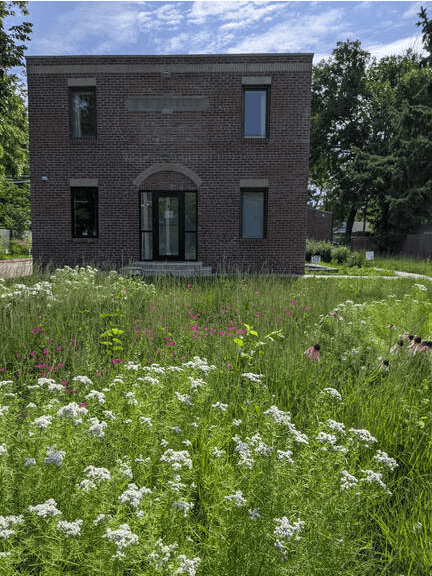
On Home Affordability, Poverty, and Unlawning America
I don’t know who that Michael Green financial analyst guy is who looked at one county in NJ to state
Let’s just dive right in. Why mix seed with plugs in your garden? Two of the biggest reasons are:
1) Cost. Doing 100% plugs will always be much more. That includes material and labor costs.
2) Maturity. Some plants will establish slower and those are the ones to plant.
I’m often mixing the too, specifically on sunny sites. What I’ll do is design and plant the ornamental layer (forbs) using plugs — think drifts and masses and tiers — then sow in a warm-season bunchgrass. If the planting is in spring this is a simple 1-2 step process: plant plugs, sow seed. If it’s in fall, the seeding must wait until spring when germination will be much better. When the grass seed goes down — often using Bouteloua curtipendula, Bouteloua gracilis, or Schizachyrium scoparium — I’ll also toss in some annual forb seed, as well. The benefit there is to increase first year color as clients impatiently wait the requisite 2-4 years until the plugs establish fully and get going.
That grass seed can often grow quite fast, depending on site and climatic conditions that first growing season. I’ve had projects where sideoats grama shot up in 2 months to full size, and others where it took a year. This is important to keep in mind as you make your forb plug selections and ensure they don’t get outcompeted by grasses the first year. In other words, research forbs that compete well with shortgrasses.
In shade I prefer to use 100% plugs. You’re always going to get more guaranteed results when you plant plugs compared to seeding, and in shade, I just don’t have the confidence with establishing a seed mix. By no means does that mean seeding in shade can’t be successful — I’d probably do it at a double rate and make sure to get a straw erosion control blanket on it.
If you are concerned about cost above all else, and also as anxious as everyone else to see the garden establish faster than a 100% seeding (which can take 4-6 years), then here’s a trick — create some nice 4 foot wide paths meandering through the area. Obviously, scale down the width based on total bed square footage (sometimes 2 feet is enough). Putting some of the space into paths will cut down on how many plugs you need, and have the benefit of creating access to the space which also shows design intention. You can also do this with a seating area or water feature.
If you’re going to go 100% seeding for your forbs, sedge, and grasses, consider doubling or tripling your rates, keeping in mind touch up seedings will likely be in order. Do the perennials, cool season grasses, and sedge in late fall or winter, followed by annuals and warm season grasses in spring. You can find more on seeding guidelines right here.
The below garden was installed employing the forb plug and grass seed strategy in spring all at once. While we did have LOTS of crabgrass the first year, the sideoats grama totally outcompeted it in the second year. Right now it’s weed tree seedlings that cause the most issues, which is to be expected. The space is mowed down each March and could stand to have some forbs added in a few spots.


I don’t know who that Michael Green financial analyst guy is who looked at one county in NJ to state

Oh that’s a cool plant, stiff goldenrod, Oligoneuron rigidum. I wonder if that would work in my garden. Maybe it’s
